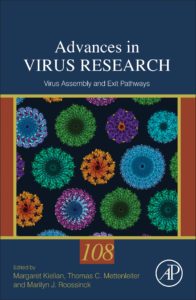Link to Pubmed [PMID] – 33837715
Link to DOI – 10.1016/bs.aivir.2020.09.004
Adv Virus Res. 2020 Oct; 108:127-164

Viruses of archaea represent one of the most enigmatic parts of the virosphere. Most of the characterized archaeal viruses infect extremophilic hosts and display remarkable diversity of virion morphotypes, many of which have never been observed among bacteriophages or viruses of eukaryotes. However, recent environmental studies have shown that archaeal viruses are widespread also in moderate ecosystems, where they play an important ecological role by influencing the turnover of microbial communities, with a global impact on the carbon and nitrogen cycles. In this review, we summarize recent advances in understanding the molecular details of virion organization and assembly of archaeal viruses. We start by briefly introducing the 20 officially recognized families of archaeal viruses and then outline the similarities and differences of archaeal virus assembly with the morphogenesis pathways used by bacterial and eukaryotic viruses, and discuss the evolutionary implications of these observations. Generally, the assembly of the icosahedral archaeal viruses closely follows the mechanisms employed by evolutionarily related bacterial and eukaryotic viruses with the HK97 fold and double jelly-roll major capsid proteins, emphasizing the overall conservation of these pathways over billions of years of evolution. By contrast, archaea-specific viruses employ unique virion assembly mechanisms. We also highlight some of the molecular adaptations underlying the stability of archaeal viruses in extreme environments. Despite considerable progress during the past few years, the archaeal virosphere continues to represent one of the least studied parts of the global virome, with many molecular features awaiting to be discovered and characterized.



